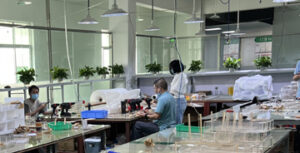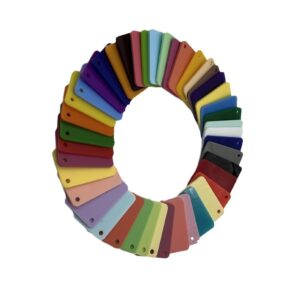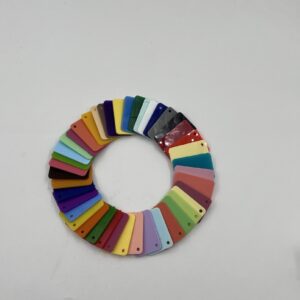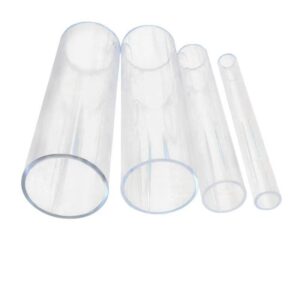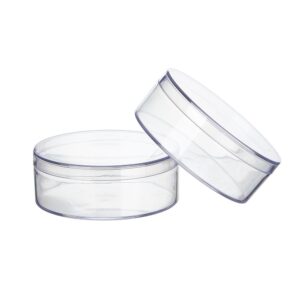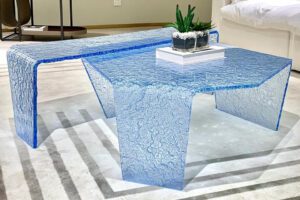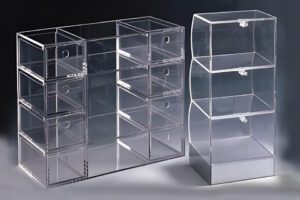Summary
Eco-Friendly Edge Certified Recycled Acrylic Sheets are an innovative and sustainable alternative to traditional acrylic materials, recognized for their substantial environmental benefits and versatile applications. By repurposing post-consumer plastic waste, these recycled sheets contribute to waste reduction and support a circular economy, significantly lowering the demand for virgin materials and minimizing plastic pollution. The production of these sheets also requires considerably less energy, resulting in reduced greenhouse gas emissions and a smaller environmental footprint compared to conventional acrylic manufacturing processes.
Notably, Eco-Friendly Edge Certified recycled acrylic sheets maintain the performance characteristics associated with high-quality acrylic, such as exceptional durability, impact resistance, and weatherability. This durability makes them suitable for a variety of applications, including outdoor structures and architectural elements, where they can withstand UV exposure without degrading over time. Furthermore, the aesthetic appeal of these sheets allows for a broad range of design possibilities, making them ideal for both interior and exterior projects, from retail displays to innovative furniture design.
In addition to their environmental and aesthetic advantages, these recycled acrylic sheets offer cost-effective solutions for construction and design projects. Their longevity reduces the need for frequent replacements, leading to long-term cost savings. Moreover, their compliance with safety regulations, including fire resistance standards, ensures that they meet essential building codes, promoting both occupant safety and sustainability in modern architecture.
While the benefits of Eco-Friendly Edge Certified recycled acrylic sheets are evident, there are discussions surrounding their initial cost and market availability compared to traditional acrylic options. As demand for sustainable materials rises, the broader adoption of these eco-friendly solutions continues to align with global sustainability goals, addressing the urgent need for environmentally responsible construction practices in the modern era.
Table of Contents
Benefits of Eco-Friendly Edge Certified Recycled Acrylic Sheets
Eco-friendly Edge Certified recycled acrylic sheets offer numerous advantages, making them a preferred choice for environmentally conscious consumers and industries alike.
Environmental Benefits
One of the primary benefits of using recycled acrylic sheets is their significant contribution to waste reduction. By repurposing materials that would otherwise end up in landfills, the use of recycled acrylic supports a circular economy and minimizes plastic pollution. Furthermore, the production of recycled acrylic consumes considerably less energy compared to that of virgin acrylic, resulting in lower greenhouse gas emissions and a reduced overall environmental footprint.
Durability and Performance
Recycled acrylic retains many of the core benefits associated with virgin acrylic, such as exceptional impact resistance and weatherability. This durability makes it suitable for various applications, including outdoor installations where UV resistance is crucial to prevent yellowing and degradation over time. High-quality recycled acrylic sheets can maintain their clarity and strength for decades, offering longevity even in harsh conditions.
Design Flexibility
Acrylic sheets provide extensive design flexibility, allowing for a range of colors, textures, and finishes. Recycled acrylic can be molded into diverse shapes, making it ideal for innovative furniture designs and architectural elements. The visual appeal of these sheets can dramatically enhance building facades and contribute to the aesthetic value of modern structures, while also being lightweight and easy to maintain.
Cost-Effectiveness
In addition to their environmental and aesthetic advantages, recycled acrylic sheets present a cost-effective solution for construction and design projects. Their longevity reduces the need for frequent replacements, leading to overall cost savings in the long term. Moreover, the reduced energy consumption during production translates to lower costs for manufacturers, which can also benefit consumers.
Compliance and Safety
Recycled acrylic sheets are generally compliant with safety regulations, including fire resistance standards. Ensuring that these materials meet building codes is essential for safeguarding the well-being of occupants and enhancing overall structural safety. The non-toxic nature of acrylic also supports environmentally safe recycling processes, providing additional safety assurance for consumers and the environment.
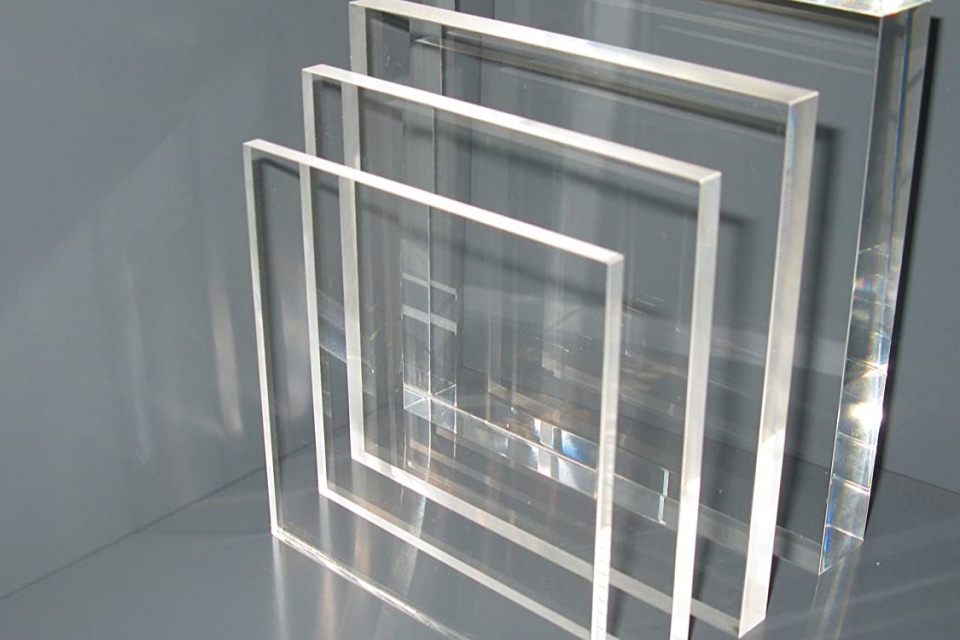
Applications of Eco-Friendly Edge Certified Recycled Acrylic Sheets
Construction and Architecture
Recycled acrylic sheets have gained significant traction in the construction industry, utilized in both residential and commercial projects due to their weather resistance, transparency, and ease of installation. These sheets are frequently incorporated into windows, skylights, and various architectural elements, contributing to the modern aesthetic and energy efficiency of buildings. As construction firms increasingly seek sustainable alternatives, the demand for recycled acrylic sheets continues to rise, aligning with a broader trend toward eco-friendly building practices in North America.
Interior Design
The versatility of recycled acrylic sheets extends to interior design, where they serve numerous applications. Their lightweight nature and available finishes make them an ideal choice for decorative wall panels, partitions, and cladding, allowing designers to create vibrant and textured surfaces that enhance the overall aesthetics of a space. Acrylic’s unique translucency is particularly beneficial for lighting fixtures, diffusing light evenly and creating an inviting atmosphere, which is why they are often used in chandeliers and ambient lighting solutions.
Retail Displays
In retail environments, recycled acrylic sheets are a popular choice for displays and shelving. Their clarity and strength enable retailers to highlight products without distractions, making shopping experiences more enjoyable for customers. Additionally, the ease of maintenance and flexibility in design allow for quick adjustments to store layouts, catering to changing inventory and promotional needs.
Eco-Friendly Features
Recycled acrylic sheets not only contribute to the aesthetic and functional aspects of a design but also support sustainability goals. By utilizing materials with a high recycled content-ideally over 80%-these sheets help reduce landfill waste and lower CO2 emissions associated with manufacturing new materials. Furthermore, their durability and resistance to environmental factors ensure longevity, making them a cost-effective solution for long-term projects.
Innovative Projects
Innovative uses of colored recycled acrylic sheets have emerged in various notable projects. For example, public installations like the art project in a London park have engaged communities through vibrant, interactive designs that utilize acrylic’s aesthetic properties to enhance public spaces. Similarly, sustainable structures like The Green Pavilion in San Francisco exemplify how acrylic sheets can provide both functionality and environmental benefits while serving as attractive elements of architectural design.
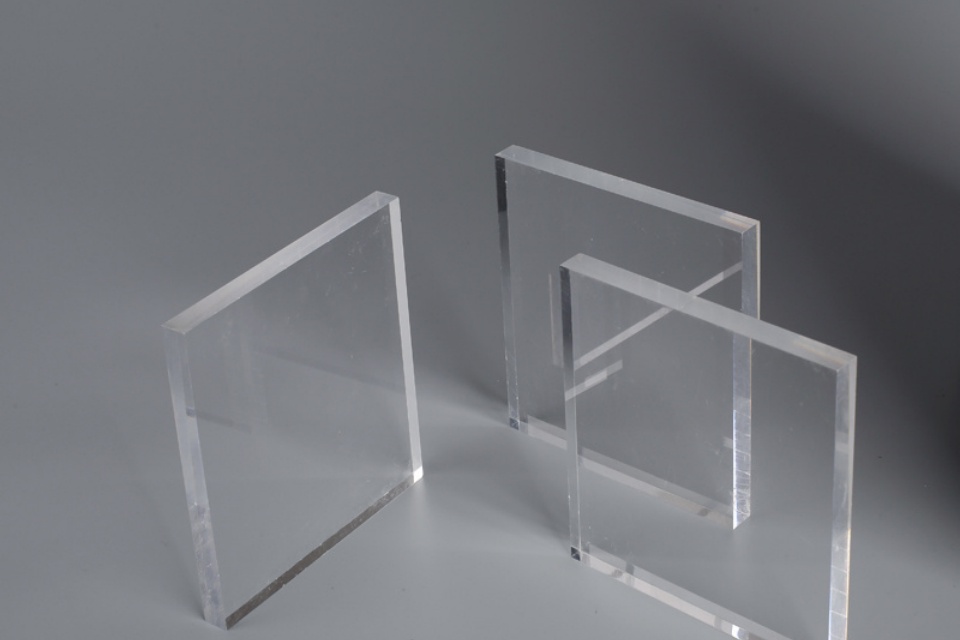
Comparison with Traditional Acrylic Sheets
Eco-friendly edge certified recycled acrylic sheets offer several advantages over traditional acrylic sheets, primarily due to their sustainable properties and enhanced durability.
Environmental Impact
Recycled acrylic sheets significantly reduce landfill waste compared to traditional acrylic. By repurposing plastic materials, they contribute to a decrease in plastic pollution and help conserve energy and raw materials needed for new acrylic production. Studies indicate that the recycling process for acrylic consumes considerably less energy than the extraction and processing of raw materials, resulting in lower greenhouse gas emissions. Furthermore, utilizing recycled materials aligns with environmental standards such as LEED, promoting a more sustainable construction practice.
Durability and Longevity
One of the key advantages of recycled acrylic sheets is their superior durability. Unlike traditional plywood, which may rot or degrade when exposed to moisture, recycled plastic boards can withstand various weather conditions without warping or swelling. This increased resilience not only extends the lifespan of the material but also reduces the frequency of replacements, contributing to lower overall project costs and minimizing waste.
Energy Efficiency
The production of recycled acrylic sheets is more energy-efficient than that of traditional acrylic. Manufacturing recycled sheets demands significantly less energy and generates fewer emissions, making them an eco-friendlier option for builders and designers. Traditional acrylic, while durable, requires substantial energy for production and can lead to a higher carbon footprint throughout its lifecycle.
Versatility and Aesthetic Appeal
Both traditional and recycled acrylic sheets are known for their versatility in design and applications. However, recycled acrylics are increasingly recognized for their potential to contribute to eco-conscious design while maintaining aesthetic appeal. They can be easily cut, molded, and illuminated, similar to traditional sheets, but with the added benefit of being sourced from post-consumer materials.
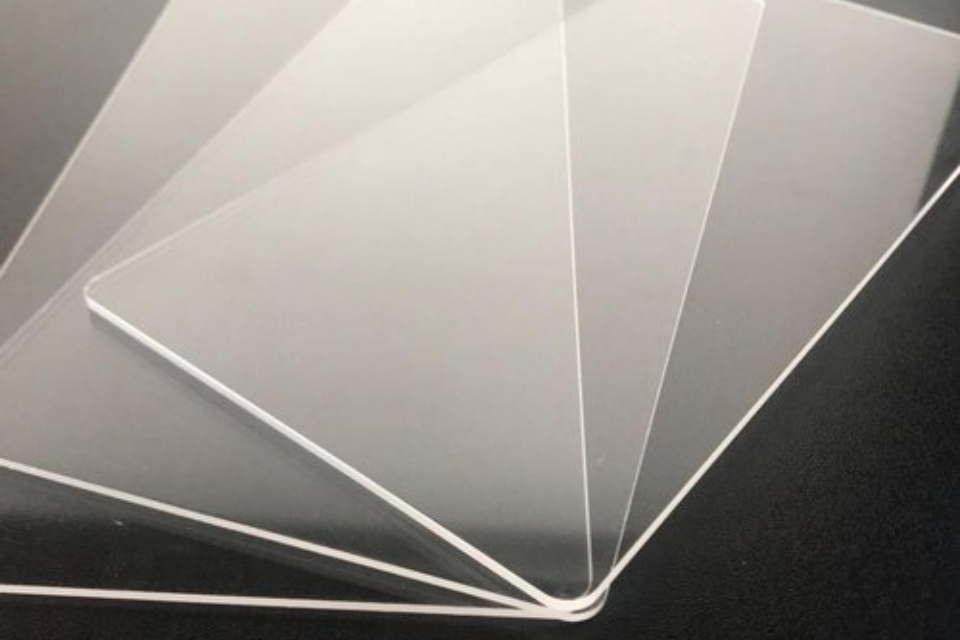
Certification and Standards
Importance of Certification
Certification for eco-friendly products like recycled acrylic sheets is crucial as it ensures materials meet rigorous environmental and safety standards. Certifications from reputable organizations provide transparency regarding the product’s composition and manufacturing process, assuring consumers that their purchases align with sustainability goals. This helps to prevent greenwashing and builds trust in the market, encouraging more widespread adoption of sustainable materials.
Types of Certifications
There are various certifications for recycled content and sustainable products. For acrylic sheets, relevant certifications often verify the percentage of recycled material used and adherence to responsible manufacturing processes. Examples include standards related to recycled content, emissions, and energy efficiency, which help consumers make informed decisions about their environmental impact.
Supply Chain Certifications
Certifications related to the supply chain ensure that materials are sourced responsibly and that production processes minimize environmental harm. These certifications may cover aspects like fair labor practices and traceability of recycled materials, providing a comprehensive overview of a product’s journey from waste to finished sheet.
End-of-Life Certifications
End-of-life certifications address how a product can be disposed of or recycled after its useful life. For acrylic, this can include certifications for recyclability and proper disposal methods, which contribute to a circular economy by ensuring the material can be repurposed again rather than ending up in a landfill.
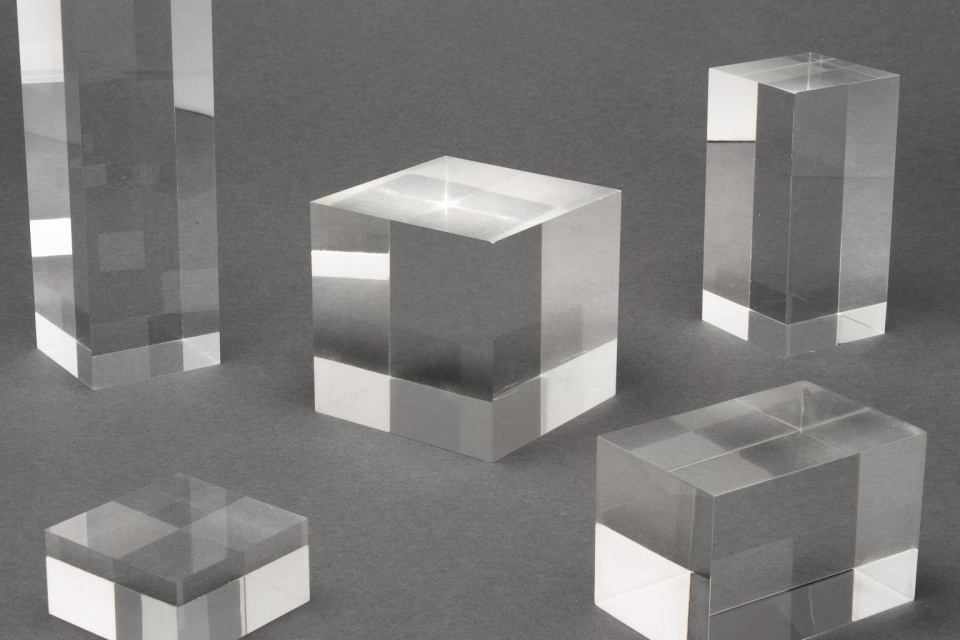
Case Studies
Overview of Applications
Recycled acrylic sheets have been successfully implemented in various commercial and artistic projects, demonstrating their versatility and eco-friendly benefits. These case studies highlight how different sectors are adopting sustainable materials to meet both functional and aesthetic needs.
Kohl’s Sustainable Signage
Kohl’s, a major retail company, has adopted recycled acrylic sheets for its in-store signage. This initiative is part of a broader effort to reduce the company’s environmental footprint by using sustainable materials for their displays, which also helps to communicate their commitment to eco-friendly practices to customers.
Brooks Footwear CO2 Reduction
Brooks, a leading athletic footwear company, has utilized recycled acrylic in its retail displays, which has helped them achieve a significant reduction in CO2 emissions. This project demonstrates how sustainable materials can contribute to a company’s environmental goals without compromising design quality or brand messaging.
Health Club Privacy Panels
A national health club chain has installed privacy panels made from recycled acrylic sheets in their locker rooms. These panels provide a durable and aesthetically pleasing solution that offers both functionality and a modern look, while also aligning with the company’s corporate sustainability objectives.
Sustainable Retail Fixtures
In a variety of retail settings, from department stores to specialty shops, recycled acrylic has been used to create sustainable retail fixtures. These fixtures include display stands and shelving that are not only durable and versatile but also help reduce the environmental impact associated with traditional materials.
Grocery Store Art Displays
A grocery store chain has integrated art displays made from recycled acrylic sheets into their stores. This project enhances the in-store experience for customers and showcases the artistic potential of sustainable materials, highlighting a creative and eco-friendly way to engage the public.
Holiday Displays for Evereve
Evereve, a fashion retailer, has created holiday displays using recycled acrylic sheets. This case study demonstrates how businesses can use sustainable materials to produce eye-catching seasonal decorations while reducing their environmental impact and promoting a more circular economy in the retail sector.


